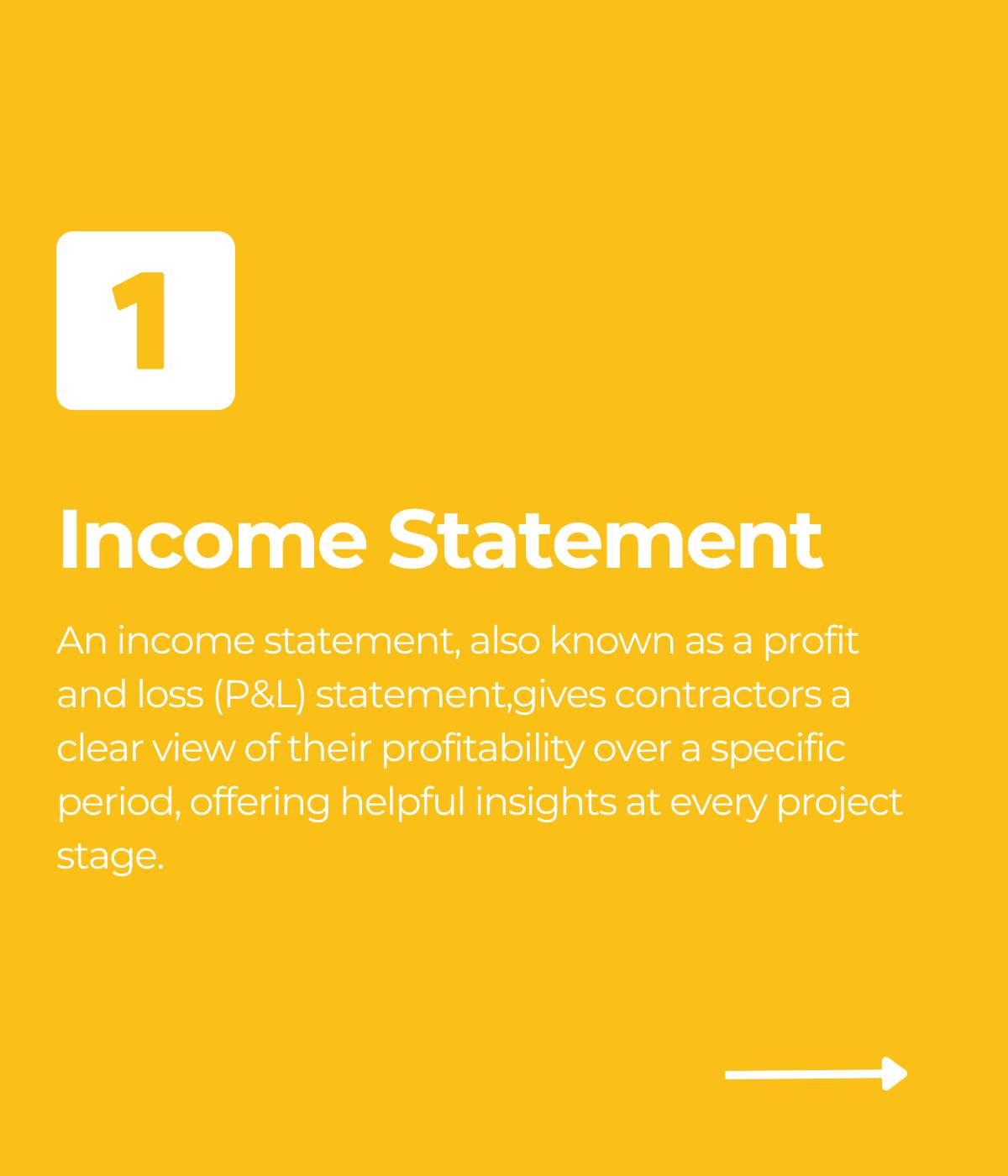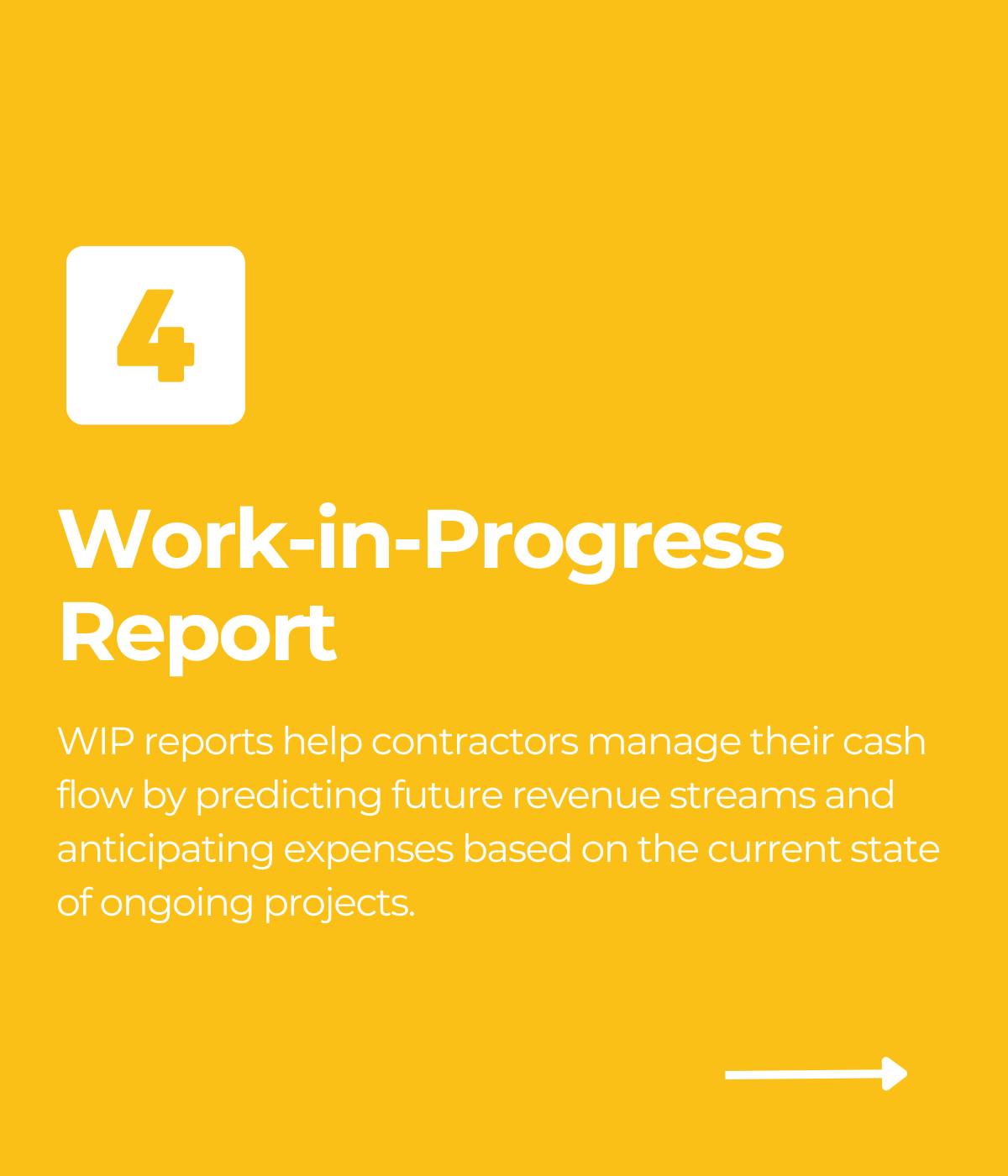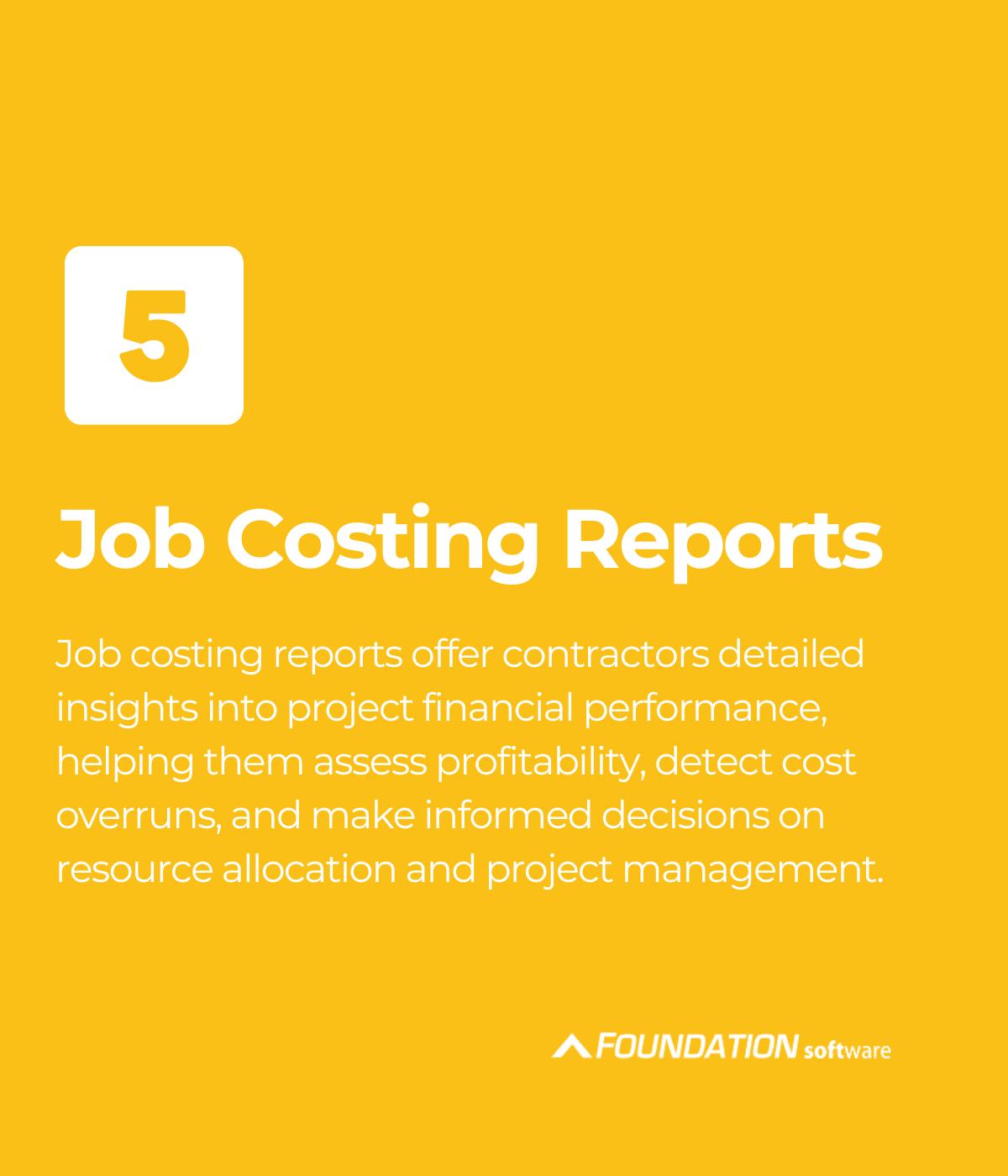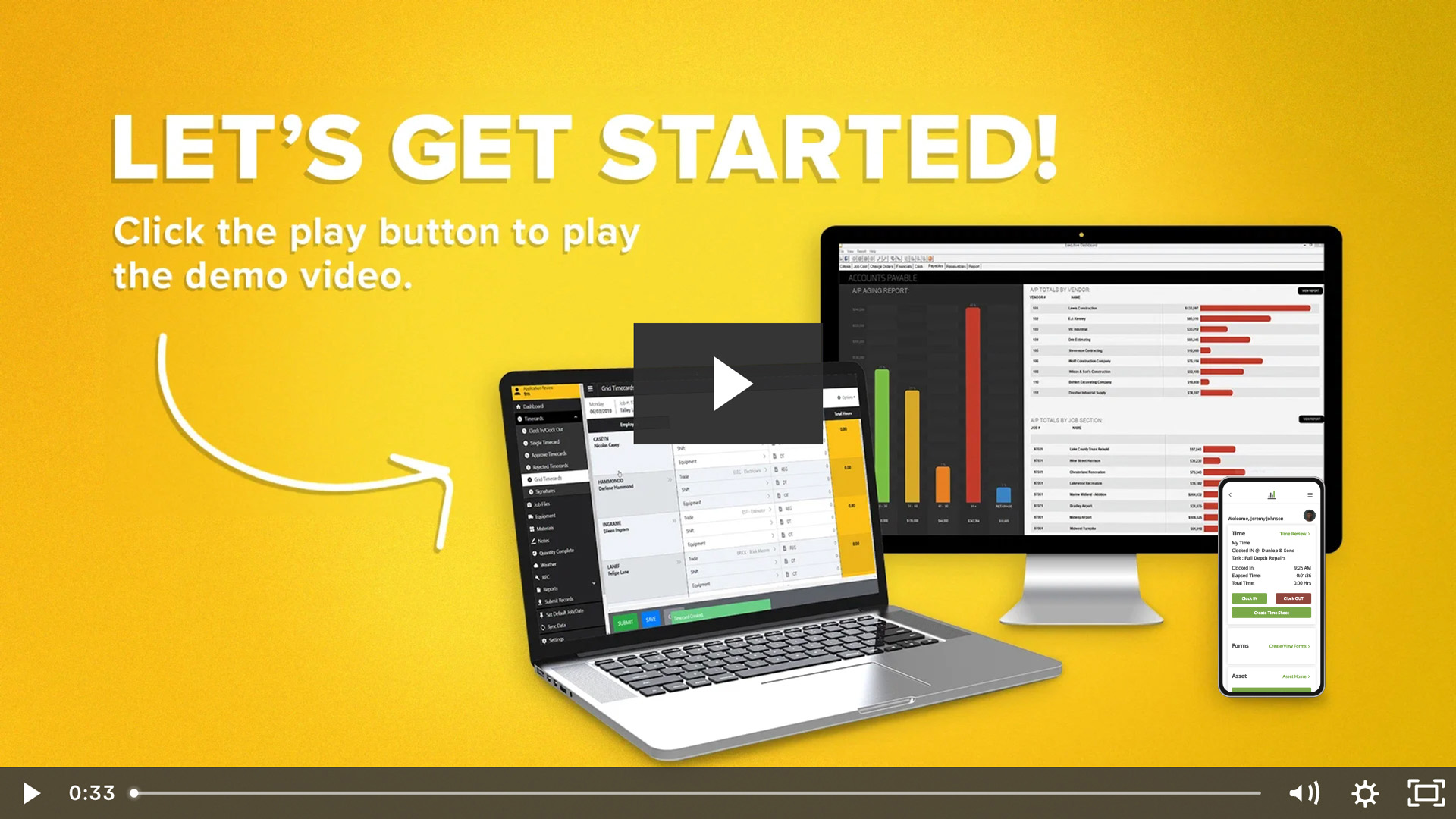
Construction cost codes are the detailed foundation that makes accurate project tracking and profitability analysis possible. While cost codes work within job and phases, a well-designed cost code structure provides the financial oversight that transforms how contractors monitor actual expenses and plan future projects.
This systematic approach enables contractors to identify exactly where money goes on each project and which jobs generate the highest returns.
Job costing is a methodical way for construction companies to keep track of all the costs involved in completing a project. With the proper job costing system in place, contractors can quickly narrow down which projects make the most profit or cause the biggest losses.
Key Takeaways
- By categorizing costs into a clear cost category system, contractors can effectively track them, minimize overruns and enhance financial health.
- Job costing is made up of jobs, phases, cost codes ad cost classes
- Jobs refer to the entire project
- Phases are broad steps that are taken to complete the project.
- Construction cost codes are associated with the individual tasks that must be completed during each phase
- Cost classes categorize cost codes and help contractors get a comprehensive understanding of exactly where money is being spent on a project
- Contractors who leverage leading construction accounting software, like FOUNDATION®, can easily perform job costing and review information in real-time reports to make adjustments before eclipsing their budget
While a project’s entire cost can be found by adding together labor costs, material costs and general overhead costs, these can be broken down further into smaller sub-categories.
For example, the cost of materials can be divided into the cost of raw materials, like plywood and sheet metal, and the cost to use required equipment.
Job costing allows you to know exactly where all your project costs come from on a given job.

When you start a new job, you’ll already have your estimated cost from your bid, but that number is liable to change as you move to complete the project.
From unexpected delays and material shortages to fluctuating gas prices, each project has several moving parts that can impact the overall financial burden of the job.
Effective job costing can help you keep track of it all.
There are four key terms frequently used in job costing:
- Jobs
- Phases
- Cost codes
- Cost classes
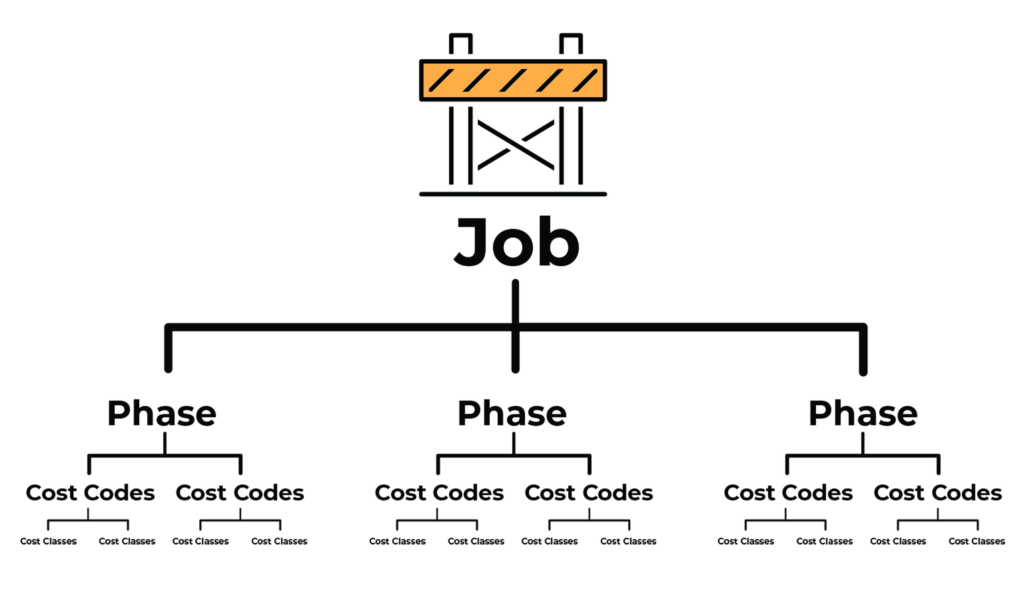
While these terms may differ depending on the software or system you use, the concepts behind them remain the same.
These cost-tracking elements work together to create a comprehensive financial tracking system that reveals valuable insights about project expenses and supports effective project management.
When properly implemented, they integrate with construction accounting software, progress billing systems, and earned value management processes to provide real-time budget visibility.
There are many terms and phrases to learn when it comes to construction accounting in general, and job costing is no different.
But don’t worry, we’re here to help.
What Are Jobs in Construction Job Costing?
Jobs in construction cost code systems represent the highest level of project organization and financial tracking.
Let’s say your company has been contracted to construct a brand-new grocery store: “Bob’s Grocer.”
Bob’s Grocer would be considered the “job.” Everything related to completing the project — from start to finish — will ultimately fall under this “job” category.
This category should be dedicated to only defining the job. By categorizing this information, your company can more effectively juggle several different projects at once.
Every cost — from labor and materials to equipment and overhead expenses — will be attributed to the job as we move down the funnel. A dedicated job category will help you visualize the income and expenditures associated with the job.
You can see the start of our job costing funnel below, beginning with our job:

What Are Phases in Construction?
Construction phases organize cost codes into logical workflow sequences that mirror actual project progression.
“Phases” can be thought of as the essential, broad steps that must be taken before a construction project is complete. A single phase may be made up of several different tasks.
Phases are completed in the same order for every project. For example, you cannot begin to frame a building before you excavate the land and complete the foundation work.
Let’s look at our example: when you’re constructing Bob’s Grocer, you have to:
Phase One: Complete site preparation and excavation
Phase Two: Move onto foundation work
Phase Three: Frame the building (phase three) and complete the rough plumbing, electrical and HVAC work
You will continue to complete new phases until the project is complete. The number of phases and sub-phases your job will have will depend on the complexity of the project.
In our “Bob’s Grocer” example, we can continue to divide the project into many different specific phases including:
Phase Four: Installing drywall and flooring
Phase Five: Instating final touches such as landscaping and painting
Phase Six: Commissioning and final inspection
To keep our example simple and easy to follow, we’ll only divide the project into three very broad phases:
- Excavation
- Construction
- Finalization
Each of these three “phases” would start a smaller funnel under the broad job title of “Bob’s Grocer.” You can see where we’re at in our job costing journey below:
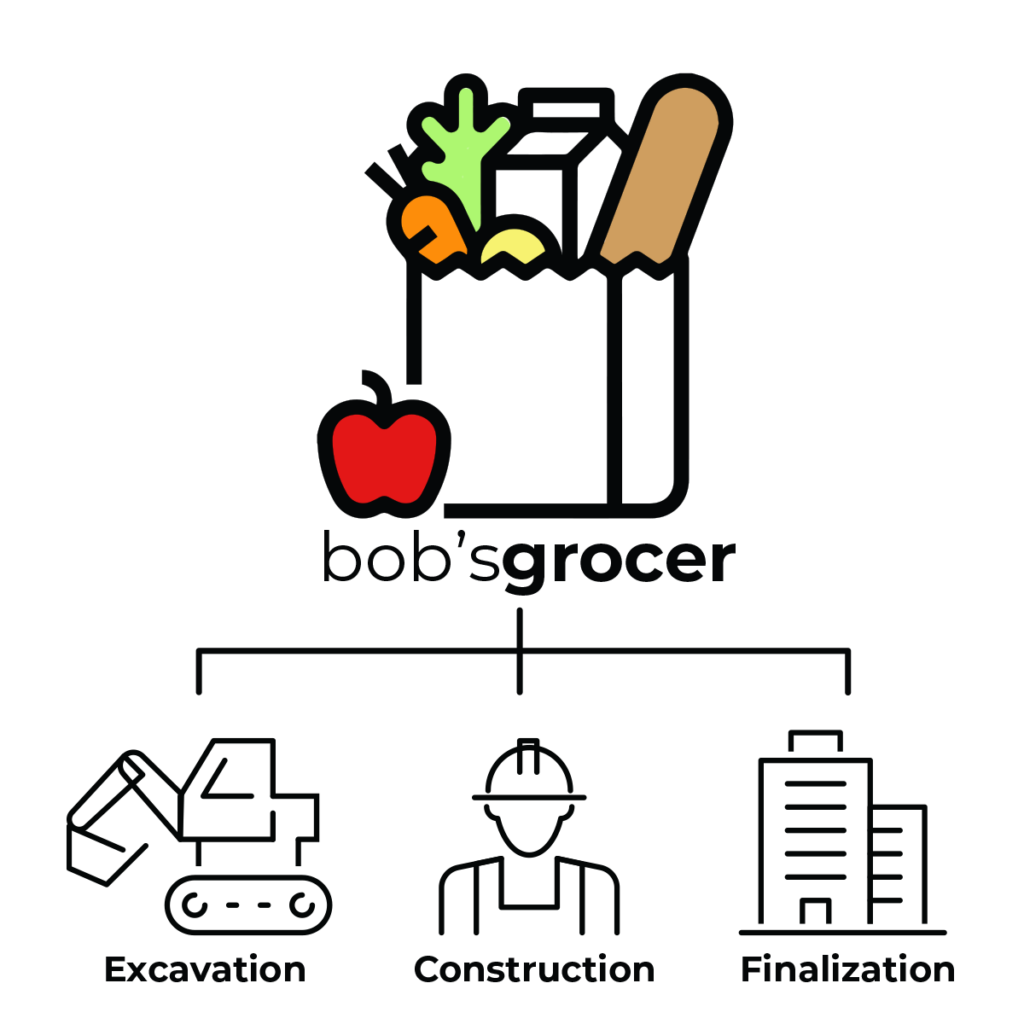
What Are Cost Codes in Construction?
Cost codes in construction are identifiers that categorize and allocate project expenses. They help contractors track costs for different project aspects like masonry, excavation and concrete work, creating an organized framework for financial tracking.
Many contractors implement standard construction cost codes to ensure consistency across future projects and enable better comparison of actual costs versus estimates.
Within each phase, you’ll find several cost codes.
Cost codes in construction are aligned with the individual tasks you must complete as you move through each phase. Everything that goes into completing each phase is a cost code.
For example, if we’re completing the foundation work phase, we might have eight cost codes:
- Site work
- Forming
- Mixing
- Placement
- Early finishing
- Troweling
- Final finishing
- Curing
Let’s look at the construction phase for “Bob’s Grocer”. In order to move through this phase, you must complete several tasks such as pouring concrete, framing and drywalling. Each of these tasks will have its own cost code.
Of course, completing the construction phase of the project will require more than just these three tasks, but for ease of understanding, let’s assume that’s all that must be done.
Within our funnel chart, each cost code will be a new branch that stems from its respective phase. In this example, we now have three cost codes branching out from our construction phase.
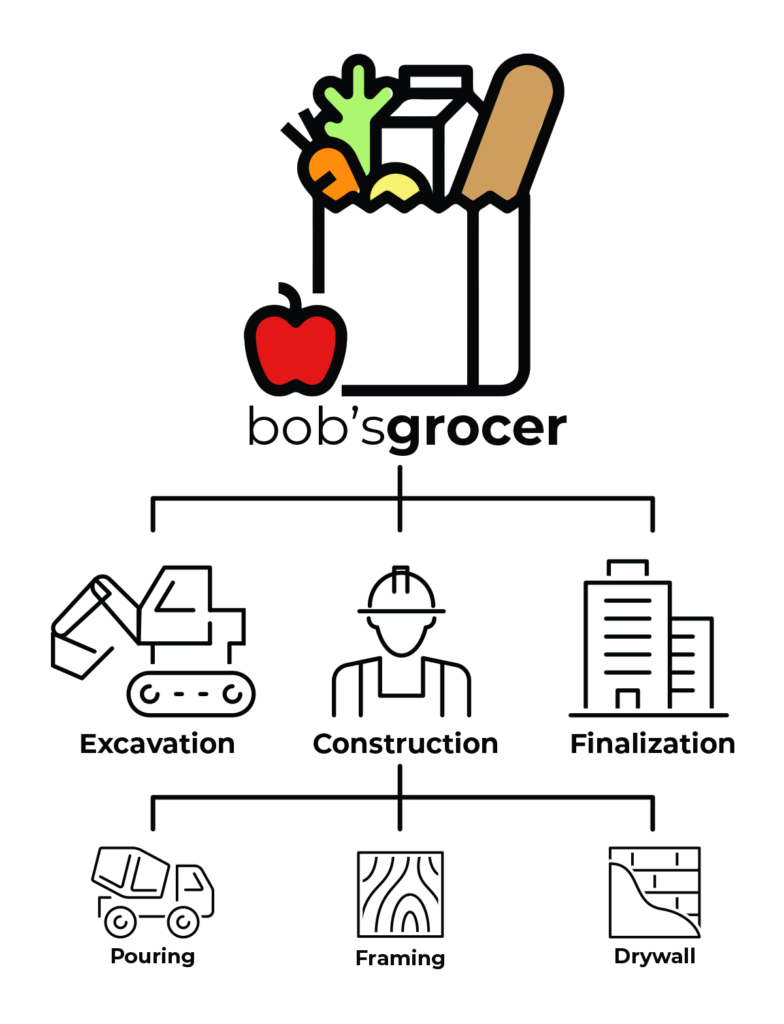
What Are Cost Classes in Construction?
Cost classes enable accurate cost tracking by organizing expenses into specific categories, helping contractors understand exactly where money goes and maintain better financial oversight of actual expenses.
All cost codes in construction can generally be divided into a few major cost class categories. Some of the more common categories include:
- Labor
- Materials
- Subcontractors
- Equipment
- Labor burden
- Other
While these cost codes are used by FOUNDATION, cost code names will vary depending on the system and software being used.
Cost classes allow contractors to calculate the monetary amount required to complete a project and help them understand exactly where their money is going.
Going back to our “Bob’s Grocer” example, let’s consider the framing cost code. This cost code can be broken down into the six cost classes.
Let’s say we get to the end of constructing Bob’s Grocer and realize the project went over budget. We can dive into our cost classes to discover where the money went.
In this example, let’s assume we budgeted $500,000 to frame Bob’s Grocer.
When we look into our cost classes, we see that we paid our laborers $200,000 to complete the project, spent $100,000 on materials, and had $50,000 in equipment costs. Halfway through framing, we realized we were behind schedule and had to bring in subcontractors to whom we paid a total of $250,000.

Looking at this cost class, we can see we spent a total of $600,000 drywalling Bob’s Grocer. This means we went $100,000 over budget on framing. We can use this information to ensure we are charging the correct amount for our service. This knowledge can also help us to price our next project more appropriately.
How Can Accounting Software Help with Job Costing?
Construction accounting software — like FOUNDATION — can help remove the margin of error that compromises financial health and accurate cost tracking. Our technology removes the guesswork from job costing, giving you and your crew one less thing to worry about.
As construction technology advances, cost codes are increasingly integrated with construction software, providing contractors with real-time cost visibility.
Between jobs, phases, cost codes and cost classes, there’s a lot to keep track of when it comes to job costing in the construction industry. Whether you operate your own crew or look after the books for a larger company, it’s important to realize that construction accounting has a lot of moving parts and requires considerations that other industry professionals don’t need to worry about.
With proper job costing, Bob’s Grocer could have been completed on-budget. Specialized construction accounting software could have provided frequent job costing reports that would allow managers to connect overages to exact details on the job. Had this been the case, managers could have taken timely steps to reduce or mitigate the $100,000 overage on framing.
Paired with a proper job costing system, construction accounting software could have helped to keep Bob’s Grocer from encountering this last-minute budgeting crisis.
It can be hard to keep things in order, especially when your focus is divided. Out in the field, your attention is on completing a high-quality job that your client will love. Finishing tasks on time is another concern.
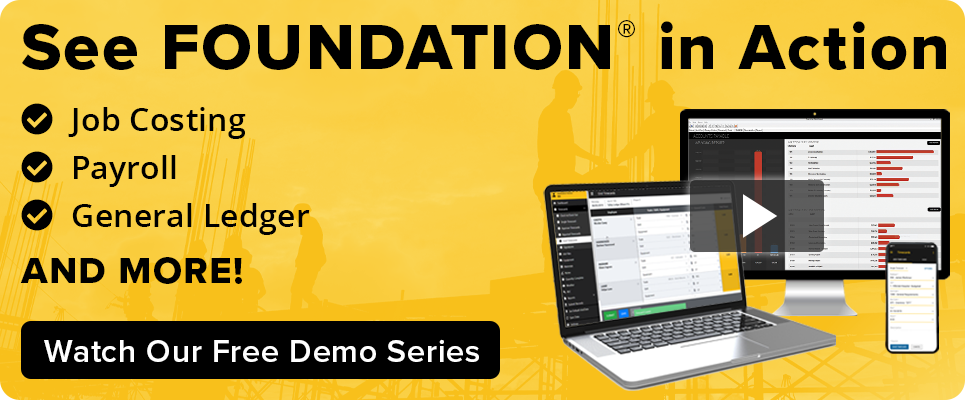
With all these things in mind, it can be easy to let job costing slip by the wayside or settle for general estimates and rough numbers. But accurate job costing with FOUNDATION helps keep projects on budget— something you, your employees and your client will appreciate.
Master construction cost codes with FOUNDATION’s integrated project tracking system. Accurate cost code implementation transforms project profitability and budget control.
Explore how FOUNDATION can simplify your construction cost code management by taking a free tour today.
Share Article
Keep on current news in the construction industry. Subscribe to free eNews!
Our Top 3 YouTube Videos
Learn about our software more in depth with product overviews, demos, and much more!

Our ACA reporting & e-filing services include official 1094-C and 1095-C IRS reporting, optional e-filing (no applying for a TCC code required), mailing to your employees and experienced support to help you.

There are plenty of reasons to make FOUNDATION your choice for job cost accounting and construction management software — just ask our clients!

From job cost accounting software, to construction-specific payroll. Get an overview on your next all-in-one back-office solution.



